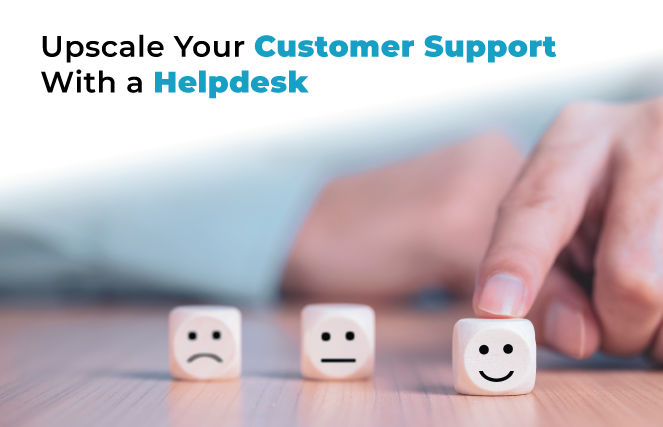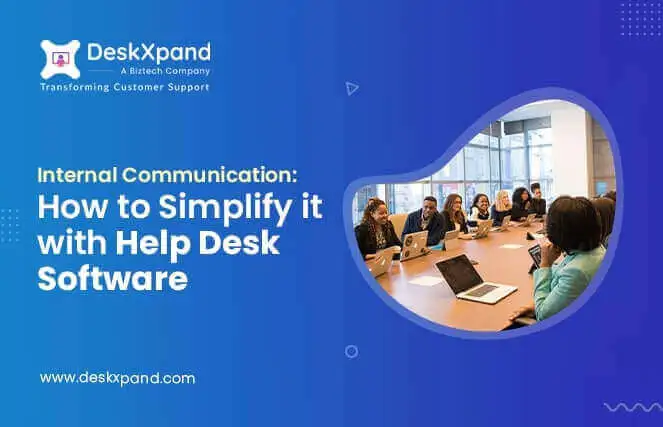Small and mid-size businesses are often met with praise for providing a personalized customer experience. Consumers usually state something like, “They treat me like a person, as compared to [insert large organizations here].” However, it does not mean that it is easy for small businesses to provide quality customer support as they have few people wearing too many hats.
Customer retention is a serious task for small and mid-size companies, so they must provide excellent customer support. With fewer hands on the deck, it is easy to lose track of all their customer support conversations, questions, queries, follow-ups across various channels. Besides, small and mid-size businesses are probably pressed for time and resources. Even if they deploy the best customer support team, what matters is how they deal with customer issues. One slip down can lead to brand abandonment.
Is your customer support team facing similar issues? Are your agents overworked, and your support team misses important customer queries? Do your customers have to wait for days to get a response, and whenever they get the response, they’re somehow unsatisfied?
Well, there can be multiple solutions to this problem. You could always hire more agents to deal with abundant customer queries. However, the best way out is picking the best customer support software catered explicitly for your needs. This can get tricky if you don’t know the way forward.
That’s the whole context of this blog – how to choose the best SMB customer support software! Let’s start!
What Is an SMB Customer Support Software?
An SMB customer support software can be defined as:

A tool that enables small and medium scale businesses to bridge the gap between the customers and support agents. It is an inclusive software that equips companies to assign, organize, manage and track customer queries accurately and, more importantly, on time. It is a touchpoint that a customer can reach out to to get help with a problem related to your products and services.

So, how does it work? How does a tool make it easy for businesses to do all that? An SMB customer support software lets you manage everything from a single dashboard. It comes with robust features that help you streamline all customer-facing queries on a single platform.
Your queries from different channels are registered in the form of tickets. It automates certain manual tasks like ticket assignment, ticket registering, follow-ups, sending notifications, etc. It lets you categorize issues based on priorities, comment within the ticket, shift from one channel to another (without starting all over again), and manages everything as you need.
Why Use SMB Customer Service Software?
Now you know what an SMB customer support portal does. It is fair to say that an SMB customer service software revolutionizes businesses through excellent customer support. Here are a few reasons why:
- It enables quicker responses and reduces the overall response time.
- It helps you focus on your loyal customers and helps you retain them.
- It simplifies support through multiple channels by bringing it all together on a single interface.
- Provides transparency as your customers can be involved in every stage of resolution.
- Internally connect your agents and tickets.
- Helps you prioritize requests by framing relevant SLA policies.
- Provides a central system for data sharing.
- Saves time by implementing automation features.
5 Steps to Pick the Best SMB Customer Support Software
When choosing a portal or software for your organization, you must come up with a plan first rather than jumping into investing. Here are five steps to help you get through:
Step 1. Note Down Your Needs
The very first step is to know exactly what you need. Ask yourself questions like:
- What do my support agents need help with?
- What are the roadblocks in your current support process?
- What are the features that will help you deliver faster?
- What are your customer’s pain points?
- What is lacking from the admin’s perspective?
Once you have these answers, jot them down. Refer to these notes and create a list of things that are critical and must-have. Make separate lists of major and minor issues. This process will help you discover issues from the core.
Step 2. List down the Features
After making a detailed list of things that trouble your customer support, you need to research and jot down the features that you expect from the software. You must do this before actually looking for a tool or software. Listing down features will give you clarity. You must prioritize according to your needs.
Here are a few must-have features and its quick overview:
- Ticket Import and AssignmentTicket import and ticket assignment are the most basic ticket management features. These features ensure that no query is missed and the right query goes to the right agent according to their expertise.
- Shared InboxA shared inbox is a simple, intuitive, and integrated mechanism for managing all the support tickets. It also lets you manage multiple customers from multiple channels at the same time from a single place.
- OmnichannelWith the help of omnichannel features, you can engage with your customers across channels of their choice. At the same time, your agents can manage all this from a single place.
- SLA AgreementsSLA agreements let you configure various timers to measure your ticket’s time in each stage of your workflow. Pick a customer service software where SLAs and escalation rules can be set up and modified based on your real-world performance. This may include setting up practical due dates, response time, routing workflows, and so on.
- Live ChatbotsLive chatbots make customer’s lives easier as they can get answers on the fly. If they get a satisfactory answer through the chatbot, they’ll not raise queries. This can save your agent time. In case of complex queries, chatbots help you keep the customers engaged until an agent takes over.
- Automated Ticketing FeaturesAutomate processes like workflows, ticket import and assignment, service level agreements, ticket status updating, notifications, escalations, and more.
- Chat Within the TicketWhile selecting an SMB portal, look for features that let the agents comment or chat within the tickets. This way, the transition from one agent to another becomes simpler.
- Collision DetectionCollision detection enables agents to view if someone else is replying or working on the same ticket. This saves potential collisions and eases the overall workflow. Agents can also merge similar tickets to minimize redundant efforts.
- Customer Self-ServiceA self-service feature is a necessity and not an option. A self-service knowledge base relieves your agents from answering the same queries again and again.
- Reporting and AnalyticsWith various data metrics, you can gain actionable insights and get a complete view of your support performance. You can evaluate your strategies by predicting the behavior of prospective client queries based on customer data.
- Canned ResponsesCanned responses simply refer to pre-saved or pre-formatted text for future use. Such messages serve as a quick reply and save time for your agents. It saves the support reps from typing repetitive answers time and again.
- CustomizationSelect an SMB portal that enables you to connect with your targeted audience on a personal level. This increases your brand identity.
After you’re done making a detailed list of the features you need, the next step would be to fix a budget and start looking for viable options.
Step 3. Compare Multiple Software
Research and find out the best software available in the market.
Compare the specifications of each tool and see if it matches your requirements. Beyond features, look if the tool you pick provides third-party integrations or not.
Decide whether you need integrations or not. If yes, then do the software come with powerful integrations?
If not, cross them off the list.
Step 4. Check The Pricing Plans
Once you know whatever features and integration you want and don’t want, figuring out your budget won’t be difficult. Let’s say you have six from the list of ten tools. And you still need to bring this number down to three to make a final decision. Therefore, the next crossing out criteria is pricing plans.
Keep your budget in mind and scan the pricing plan. Compare various tools and their functionalities, and figure out the three best options from all the available ones.
Step 5. Never Purchase Without a Free Trial
Now that you have shortlisted three tools after this intensive research, all you’ve to do is try them out. Immediately skip the one that doesn’t offer a free trial. Transparency is a must when it comes to buying an SMB customer service portal. Try them out and judge for yourself. See if it is easily adaptable or not. Let your support team in on the decision too. After all, they’re the ones who’ll be working on it.
So, this was all about how to choose the best customer service software for small and mid-size businesses. If you are looking for a robust customer support tool or need a starting point, DeskXpand is a great choice. Not only does it offer all the features, benefits, and integrations mentioned in this blog, but it also comes at an affordable price! Get started today.







